2019 Summer Research Grant Awardees
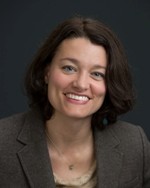
Dr. Aimee Eggler
Department of Chemistry
College of Liberal Arts & Sciences
Project Title: Bridging the Gap Toward Implementing Synergistic Nrf2 Activators in Chronic Disease Prevention
Eighty-six percent of the United States’ health care costs are devoted to treatment of chronic diseases, most prominently cancer, heart disease, diabetes, and chronic obstructive pulmonary diseases. Notably, emerging evidence indicates that chronic diseases can be prevented or mitigated by activating the Nrf2 protein within our bodies. Nrf2 turns on genes that encode antioxidants and other protective proteins, combating stressors that contribute to chronic disease progression. Nrf2 is activated by various stresses, as well as by an extensive list of small molecules. Remarkably, many of these are found in foods or traditional medicines from plants, such as the molecule sulforaphane from broccoli sprouts, in over 60 clinical trials. An exciting, emerging area of research is combining two or more Nrf2 activators to achieve an effect that is more than additive, termed synergistic. Our research group has developed a two-molecule model system of synergistic Nrf2 activation, combining sulforaphane with the molecule di-tert-butylhydroquinone (dtBHQ). The significant extent of synergism observed provides a tractable means of investigating the mechanisms of synergy. We have developed a mathematical model to quantitate synergism of Nrf2 activators using the sulforaphane/dtBHQ combination. The funding provided by the University Summer Grant Program will support two key next steps. First, because dtBHQ is not FDA-approved, we will screen for synergism between sulforaphane and other molecules that are from natural sources and/or FDA-approved for use by humans. Second, to investigate how synergism occurs, we will develop assays to probe the molecular changes within the cell upon treatment with the two molecules.
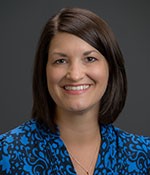
Dr. Elaine Youngman
Department of Biology
College of Liberal Arts & Sciences
Project Title: Investigation of the Molecular Mechanism Underlying the Inheritance of a Learned Behavior in a Simple Animal Model
Successful foraging for food is critical to the survival and fitness of all animals and requires decisions that make optimum use of available resources. To be successful, animals must be able to identify sources of food that are of high nutritional and energy value, but also to discriminate against those that are toxic or pathogenic. Recently, my lab has made the surprising discovery that under the right conditions, the soil-dwelling roundworm Caenorhabditis elegans (a well-studied model for animal behavior) has the ability to pass memory of a pathogenic food source on to its offspring. This observation is in line with a growing body of evidence that animals can sometimes pass a molecular signature of physiological stresses to its offspring through what are termed “epigenetic” (non-Mendelian) mechanisms. This proposal focuses on the central question: How do animals learn to avoid food sources that have caused illness in the past, and how can this learned avoidance be transmitted to offspring? We know that learning and memory require the storage and transmission of information by the cells of the nervous system and further that this information is encoded in as changes in the expression of particular genes in specific neurons. This project seeks to understand how, at the molecular level, these all-important changes in gene expression are brought about and maintained, even across generational boundaries.

Dr. Rosalind Wynne
Department of Electrical & Computer Engineering
College of Engineering
Project Title: Redefining Tiny Cell Cultures with Optical Bridges
Inside the human body’s complex system chronic conditions like cancer, Alzheimer’s and Parkinson’s Disease can cause tremendous life and health challenges but continue to have no cure. Treatments for these ailments require years of development, moving slowly from bulky static cell cultures to clinical trials on animals and still not ensuring successful resolution of symptoms for the patient. This project seeks to redefine this flawed timeline by developing tools for microfluidic cell cultures. These microfluidic systems are gum-stick sized laboratories with conduits as thick as a human eyelash that can transport and mix active cells with pharmaceuticals in microscopic sized volumes to expedite drug development. By allowing continuous flow of cells, these tiny laboratories will more efficiently move scientific efforts towards impactful personalized medical treatments which are not possible in conventional static cell cultures.
Microfluidic cell culture tools may reduce the cost of conventional health care, as well as, address mass immunization needs in the face of a pandemic. These tools can be mass produced while personalizing each one to a patient’s genetic profile using very small sample volumes. However, the discipline is lacking the components that can promote standardized instrumentation to isolate and measure the response of a single cell. The development of such tools requires cross-disciplinary collaborative efforts to clear the technological hurdles of single cell manipulation and engineer better medical treatments.

Dr. Meredith Bergey
Department of Sociology & Criminology
College of Liberal Arts & Sciences
Project Title: Clients’ Perspectives on Health Coaching: Adjunct, Alternative, or Challenge to Medicine?
Recent decades have seen the rise of “coaches” to address various health-related concerns that once fell more clearly under the jurisdiction of clinicians. Despite this growing phenomenon, little research exists on the emergence and trajectory of such fields or their implications for the social meanings, experiences, and practices surrounding the conditions they seek to manage. This study is part of an ongoing examination of the emergence of ‘coaches’ – as a field without a medical license – to treat medical conditions, and the role of non-medical knowledge and intervention in addressing such conditions. The focus of this project is on a particular case of health coaching – Attention Deficit Hyperactivity Disorder (ADHD) coaching and the experiences and perspectives of the clients who utilize their services. The latter will be measured via qualitative, semi-structured interviews. In exploring the social meanings and practices associated with ADHD coaching, this work engages with some of the foundational concerns of medical sociology, namely about processes of and responses to medicalization and about the nature of medical/social problems and professions. Underlying goals of this study are to contribute to the empirical and theoretical concerns, not only of sociologists, but also of various stakeholders (e.g. health policymakers, clinicians, and patient groups), whose work, practices and lived experiences may be enhanced by a deeper understanding of health coaching.
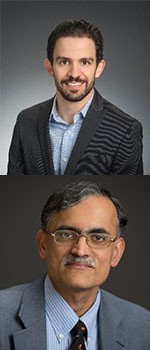
Dr. David Cereceda
Dr. C Nataraj
Department of Mechanical Engineering
College of Engineering
Project Title: Predicting the Risk of Spontaneous Premature Births in First-Time Mothers Using Clinical Data and Machine Learning
According to the World Health Organization, premature birth (babies born before 37 completed weeks of gestation) affects approximately 15 million neonates around the world every year. In the United States, the premature birth rate is still 10%, a value that has improved little since the 1980s, even as complications associated with these early births represent the leading cause of death in children under five years of age. Two-thirds of these occur unexpectedly, with the subsequent risk for moms and babies.
Recent studies have improved the accuracy to identify spontaneous preterm birth (sPTB) of women having at least one prior birth but there is still a high level of uncertainty when there is limited information about a previous pregnancy. Doctors thus remain unable to adequately assess the risk in first-time mothers. How can we provide quantitative predictions of these preterm births when no information about a previous at-risk pregnancy is available? This project will address this question by creating and validating a neural network algorithm that can determine the risk; this algorithm would subsequently form the basis for a clinical decision support system (CDSS) to aid physician intervention and reduce sPTB in first-time mothers.
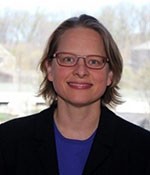
Dr. Deanna Zubris
Department of Chemistry
College of Liberal Arts & Sciences
Project Title: Efficient and Sustainable Iron Catalysts for Transforming "Less Active Monomers" (LAMs) Into New Materials
While polymers have improved the necessities of modern life in countless ways, including clothing, shelter, transportation, and medicines, the natural resources that we use to prepare polymers are limited. Catalysis is a powerful tool that allows chemists to be better stewards of our planet's natural resources by rendering chemical reactions more efficient, such as those used to make polymers. A catalyst is an intricate assembly of atoms that commonly includes a precious metal for superior performance. Replacing scarce and costly precious metals such as platinum with earth-abundant metals such as iron can improve catalyst sustainability. The goal of this project is to prepare earth-abundant iron catalysts and use them to make new and useful polymers from monomers known as less active monomers. We seek less active monomer-derived polymers with precisely controlled sizes and shapes due to their potential as degradable materials for biomedical applications. New catalyst development is our approach to maximize efficiency and sustainability. Less active monomers are difficult to access with today’s catalysts, yet our interpretation of the chemical reaction mechanism for less active monomers suggests iron catalysts may be ideal for this task. Furthermore, instead of burning fossil fuels to meet the energy requirement for this challenging polymerization reaction, we plan to use light through a process known as photocatalysis.

Dr. James Wilson
Department of Biology
College of Liberal Arts & Sciences
Project Title: Targeting the Eut MCP for Analysis Across Bacterial Species
Some bacteria have the ability to make a non-membrane, protein-based organelle called a microcompartment (MCP). Membrane-bound organelles are essential parts of eukaryotic cells (like animal or plant cells with a nucleus). In contrast, bacteria do not contain membrane-bound organelles and generally do not compartmentalize different cell processes as in eukaryotic cells. However, a range of studies indicates that some bacteria contain an organelle (the MCP) that consists of a protein shell that houses metabolic reactions utilizing toxic or volatile intermediates. There is much potential for the use of MCPs to engineer bacteria with novel pathways that would provide benefits in areas such as biotechnology, bioremediation, and medicine. The genes that encode a given set of MCP proteins are contained together on a contiguous DNA segment in a specific species genome (not all bacteria possess the MCP genes). We have developed a technique called FRT-Capture to clone large genomic segments in bacteria and subsequently transfer these segments to other recipient bacteria. We propose to clone the entire intact Salmonella Typhimurium Eut MCP system using FRT-Capture and analyze the expression and function of the Eut MCP system after transfer to multiple other bacterial species. This first-of-kind analysis would tell us if this MCP system can be used for bacterial engineering across different bacteria and would allow key questions about MCP evolution to be answered.
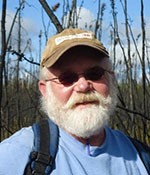
Dr. R. Kelman Wieder
Department of Biology
College of Liberal Arts & Sciences
Project Title: Gaseous Nitrogen Losses from Alberta Peat Bogs - Big Deal or Not?
Peatlands are a major feature of the northern Alberta, Canada landscape, with bogs covering 21-53 % of the 140,329 km2 Oil Sands Administrative Area (OSAA). These bogs have persisted in a region where atmospheric nitrogen (N) deposition is exceptionally low. However, development of the oil sands resource has led to increasing atmospheric N deposition related to industrial stack and diesel-fueled mine fleet emissions of nitrogen oxides. This N ultimately is deposited on the region’s terrestrial and aquatic ecosystems. Bogs are ombrotrophic, meaning the sole inputs of water and new nutrients is atmospheric deposition (rain and snow). We have previously shown that the structure and function of Alberta bogs in the OSAA may be negatively affected by increasing atmospheric N deposition. It is generally thought that gaseous losses of N from bogs as NH3 and N2O to the atmosphere are quite low, although data to support this view are sparse. Through this Summer Research Grant, I will conduct preliminary laboratory experiments to quantify N losses as NH3 and N2O from peat collected from low N deposition areas of Alberta upon exposure to different levels of simulated atmospheric N deposition. If gaseous N losses from Alberta bogs are occurring, they could dampen the ecological impacts of increasing atmospheric N deposition to northern Alberta bogs.
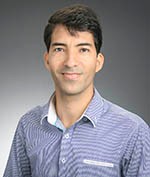
Dr. Mojtaba Vaezi
Department of Electrical & Computer Engineering
College of Engineering
Project Title: Leveraging Stochastic Geometry in Enhancing Security of Smart Homes
Cybersecurity is one of the most pressing issues in the design and optimization of the emerging Internet of things (IoT) networks such as smart homes and smart cities. The Department of Homeland Security's new strategic principles for securing the IoT highlights that time to address IoT security is right now and specializes six strategic principles to ensure IoT security. The very first item in this plan is to incorporate security at the design phase. While the secure design of wireless networks has always been a concern and there are cryptographic solutions and higher-layer policies for this purpose, such solutions are getting more valuable due to the rapid advent of highly capable processors which can decipher the security codes in a short time. Besides, these commonly used methods are very complicated for low-cost IoT devices. Physical (PHY)-layer-based security approaches, which exploit resources in the transmission medium to enhance secure communication against eavesdroppers, are alternative solutions which better fit to low-complex IoT devices. Current PHY-based solutions are, however, limited to a small number of nodes. This study is a starting point to extend such solutions to large-scale IoT networks. The primary goal of this proposal is to apply stochastic geometry to analyze and enhance the security of large-scale systems with the specific purpose of improving the safety of smart homes in the design phase. Stochastic geometry is a mathematical tool used to analyze and optimize the performance of large-scale networks in the system-level owing to its mathematical tractability and accuracy.
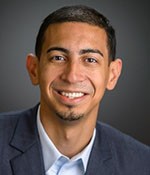
Dr. Alexander Diaz-Lopez
Department of Mathematics & Statistics
College of Liberal Arts & Sciences
Project Title: Peaks of Permutations
Imagine a dynamical system where vertices (think of people) redistribute all their masses (think of money) in some predetermined way. We are interested in studying what happens as this process continues for a long time (imagine generations of people redistributing their money to their relatives) and which vertices end up with the largest (resp. smallest) collection of mass (money) i.e., where are the wealthy (resp. poor) people? In some specific cases, this turned out to be equivalent to studying a property of permutations called peaks. My research projects are geared toward understanding these peaks of permutations. One can think of peaks as vertices (people) who have accumulated more mass (money) than the vertices (people) they are connected to. Our motivation question is: What is the most likely distribution of peaks in a randomly chosen permutation? To answer this, we need to study: How many permutations contain peaks at certain vertices? The studies of peaks bring together a fascinating combination of algebra, combinatorics, and analysis. In addition to actively work on solving some open conjectures in the area, I will spend time finalizing a project I started with five undergraduates related to this topic and develop more open questions accessible to undergraduate students interested in math research.

Dr. Angela DiBenedetto
Department of Biology
College of Liberal Arts & Sciences
Project Title: Finding Gene Targets of the Brd2a and Brd2b Proteins, Master Regulators of Central Nervous System Development in Zebrafish with Relevance to Human Disease
The Brd2 gene is a master regulator controlling the expression of multiple other “target” genes---it acts at the top of gene regulatory networks that direct fundamental cellular processes of mitosis, cell death, and cellular differentiation. Consequently, defects in Brd2 have multifaceted effects, resulting in developmental abnormalities of the circulatory, excretory and central nervous systems, as well as epilepsy and several types of blood cancers in humans. Despite its central role in development and disease, the target genes controlled by Brd2 are largely unknown. We intend to analyze targets of Brd2 during embryonic development, using zebrafish as a vertebrate model system. We first obtained a set of candidate Brd2 targets by comparing the total RNA content of normal and Brd2-deficient embryos and choosing genes that show either reduced or increased expression when Brd2 itself is reduced. We will now test these putative targets for their ability to rescue or mimic Brd2-deficient phenotypes—either by overexpressing a target gene in Brd2-deficient embryos; or, by reducing the expression of a target gene in a normal Brd2 background. A gene that rescues or mimics Brd2 deficiency is a verified downstream target of the Brd2 regulatory network, providing new avenues of grant-worthy research into mechanisms of molecular action. This work will lead to a fuller understanding of how gene networks control development and may suggest novel therapeutic approaches for Brd2-related diseases.

Dr. Christopher Kilby
Department of Economics
Villanova School of Business
Project Title: Accounting for Data Uncertainty: Biases in Web-Scraped Chinese Aid Data
Most foreign aid research uses data donor countries report to the OECD’s Development Co-operation Directorate (OECD DAC). In the last two decades, China has become a major donor but neither reports to the OECD DAC nor publishes its own figures. Accounting for Chinese aid is important since China follows a different strategy than other large donors and so could undermine attempts to use aid as leverage change in regimes with poor governance or economic policy. There is a widely used Chinese aid dataset assembled by AidData, a research lab at the College of William and Mary that employs an army of undergrads to scour the web for information on individual Chinese aid projects from media and other sources. My research examines whether this approach introduces systematic biases, if, for example, web-scraping by English speaking undergraduates works better in countries with more press freedom, more postings in English, or more Internet access. In cases with known underreporting, I explore what statistical methods can incorporate this information to yield more reliable results.
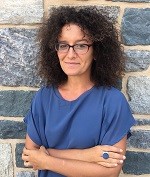
Dr. Agnese Codebo
Department of Romance Languages & Literatures
College of Liberal Arts & Sciences
Project Title: Between Eradication and Representation: Constructing Poverty in Midcentury Buenos Aires
This research project tentatively titled “Between Eradication and Representation: Constructing Poverty in Midcentury Buenos Aires” traces how poverty emerged culturally in midcentury Buenos Aires. It does so by examining a space of encounter, a kind of “thirdspace” in Edward Soja’s words, where reality and abstraction meet. In my article this encounter features the state plans aimed at eradicating villas miseria (the local term for slums) from Buenos Aires, and a corpus of cultural objects depicting slums between 1957 and 1963. My basic claim is that the politically-motivated conceptual erasure of the slum informed its aesthetic representation. In particular I will look at Bernardo Verbitsky’s novel Villa Miseria también es América (1957) and Antonio Berni’s series of multimedia collages focused on the fictional character of Juanito Laguna (1958-1978). My aim is to show how each of these representations responded to the state plans to eradicate villas miseria by offering an alternate vision of Argentine slums. While the state discourse on slums depicted them as places of lack and emptiness, Berni and Verbitsky revealed them as territories defined by a profusion of objects and life. By looking at the shared forms of the novel and the art series, the essay will explore how culture came to reinsert the slum within the city’s regular grid division, interrupting the linearity imagined by the state. Such a gesture countered the state discourse on poverty while also ultimately having the consequence of converting the slum into something easily consumable.

Dr. Edward Kim
Department of Computing Science
College of Liberal Arts & Sciences
Project Title: Learning Sparse Dictionaries on Spiking Neural Networks
The CPU (central processing unit) is thought to be the “brains” of a computer; however, functionally, it operates nothing like the mammalian brain. Neurons in the brain represent and communicate information through firing electrical impulses. These patterns and spikes of neural code govern perception, thought, movement, creativity and essentially all processes within the brain. Many hypothesize that the addition of biologically inspired software and hardware is necessary to reach (or surpass) human-like intelligence. Thus, in a recent effort to make more intelligent machines, computer chip makers have embarked on efforts to mimic the function and architecture of the brain in silicon. These silicon networks are modeled from the neurons, synapses, and spike communications seen in biological learning systems. Furthermore, these chips use the language of impulses or spikes to perform computations and store memory, i.e. spiking neural networks. For this USG, I will be investigating a sparse coding algorithm that uses a spiking neural network to perform computation. In particular, I will be researching ways to learn multi-modal dictionaries (such as vision and speech) together. Ultimately, this project should lead to more robust and energy efficient algorithms for artificial intelligence.
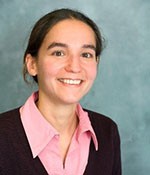
Dr. Ani Ural
Department of Mechanical Engineering
College of Engineering
Project Title: The Structural Role of Osteocyte Lacunae in Determining the Mechanical Behavior of Bone
Osteoporosis and elevated risk of fracture are significant problems which lead to reduced quality of life and increased mortality with an annual cost of $17 billion/year. The affected population and the associated costs are estimated to increase by 3- to 8-fold in the next few decades. The current osteoporosis assessment via bone mineral density (BMD) has limited value in predicting fracture as it is a measure that reflects only the bone quantity. In order to address this growing health problem, identification of alternative structural and material measures of bone quality that predicts bone fracture risk is needed. At the microscale, intracortical vascular porosity reduces bone’s strength and fracture resistance increasing fracture risk. However, the influence of intracortical microporosity, composed mainly of osteocyte lacunae on fracture risk have been largely overlooked despite their presence in bone in large amounts. In order to address this significant knowledge gap, the current proposal aims to quantify the influence of osteocycte lacunar morphology on the bulk mechanical properties of bone and on the local mechanical environment of osteocyctes using a novel finite element modeling approach. Specifically, the project will identify the extent of influence of osteocyte lacunar density, size, and shape on the bulk mechanical properties of the bone and determine the effect of osteocycte lacunar density, size, and shape on the cellular function of osteocytes through the local strain environment around lacunae.

Dr. Terence Yee
Department of Education and Counseling
College of Liberal Arts & Sciences
Project Title: Facilitating the Success of International Students in a Predominantly White Institution
The international student population is a significant contributor to the U.S. economy (Institute of International Education, 2018) and cultural learning (Altbach & Knight, 2007). Although there is a slew of benefits that international students bring to the United States, research regarding their academic experiences tells a different story. Numerous researchers had highlighted international students’ struggles such as experiences of perceived discrimination and prejudice (Frey & Roysircar, 2016; Sangganjanavanich & Black, 2009), acculturative stress and cultural adjustments (Rahman & Rollock, 2004; Smith & Khawaja, 2011), maladaptive perfectionism (Hamamura & Laird, 2014), homesickness (Poyrazli & Lopez, 2007), feelings of loneliness (Wei, Tsai, Chao, Du, & Lin, 2012), and suicidal ideation (Sümer, Poyzli, & Grahame, 2008). These challenges faced by international students may be exacerbated in a predominantly white institution where opportunities for feeling like an ‘outsider’ is more pronounced. This study is conceived to facilitate the success of international students in a predominantly white institution by answering these three research questions: (1) what are some strengths that international students can draw upon in times of stress? (2) what is their motivation to persist and succeed? and (3) how can predominantly white institutions facilitate the success of international students? Through this study, we hope to shift the conversation about international student population in a more positive light that focuses on their strengths.

Dr. Thomas Ksiazek
Department of Communication
College of Liberal Arts & Sciences
Project Title: Disruptive Engagement: User Comments and Moderation in Digital Journalism
The lack of civility in Americans’ discussion of politics is a growing public concern. User comments in digital journalism (i.e., the discussions that occur in the spaces below online news articles) are one place where incivility has received a great deal of attention and critical scrutiny—publicly, as well as in academic and industry communities. User comments are celebrated for their potential to be a space for public engagement and deliberation of the news, and at the same time widely criticized for their often-uncivil nature. In a political era that many characterize as polarizing and uncivil, it is useful to understand whether discussions that occur around online news are contributing to this trend.
In many ways user comments have disrupted the field of journalism and a growing number of news organizations have abandoned their commenting features altogether (e.g., NPR, Reuters). As users engage with digital forms of journalism in varied ways, the ability to immediately take part in a public discussion of current events with other, often anonymous, commenters have sparked widespread debates about the value and necessity of user comments. This University Summer Grant supports work on a book project—Disruptive Engagement: User Comments and Moderation in Digital Journalism (Routledge)—exploring the ways that user comments and the discussion moderation practices implemented by news organizations to manage those comments are disrupting the field of journalism.

Dr. Marc Gallicchio
Department of History
College of Liberal Arts & Sciences
Project Title: The Greatest Mistake of the War? Roosevelt, Truman, and the Unconditional Surrender of Japan
Book-length manuscript on the policy of unconditional surrender and the surrender of Japan.

Dr. Adam Langley
Department of Biology
College of Liberal Arts & Sciences
Project Title: Automated Tracking of Altered Plant Phenology in Response to Climatic Warming in a Marsh-Mangrove Ecotone
Plant phenology is the progression of seasonal events such as spring greening, flowering, fruiting and senescence. I propose to deploy PhenoCams, cameras that automatically capture and upload repeated digital images, at our established experimental warming sites in northeastern Florida, which are undergoing a dramatic climate-driven shift from marsh grasslands to mangrove forests. These cameras allow for quantification of timing of greening and senescence of plants at our sites. This project would be the first continuous record of seasonal phenology in a marsh-mangrove ecosystem. Owing to the rugged and remote nature of our sites, we are currently unable to document the timing of important phenological changes and other episodic events. This funding would afford a chance to determine how climatic warming and the resulting vegetation shifts affect phenology in this critical ecosystem.

Dr. Danai Chasaki
Department of Electrical & Computer Engineering
College of Engineering
Project Title: Design and Implementation of a Security Framework to Improve Trust and Reliability in Virtual Environments
Cloud Computing, Software Defined Networks (SDN) and Network Functions Virtualization (NFV) are leading the transformation that is affecting the information and communications technology industries. The architecture of the underlying networking infrastructure is going to be based on modular networking functions that could be deployed and scaled on demand to effectively accommodate the different use cases. The building block of such transformation is the availability of open source trustworthy and reliable software solutions. Despite the flexibility and programmability benefits associated with cloud and SDN environments, these virtual paradigms face many security challenges. Such systems are very complex, which open up more attack vectors that traditional IP networks. The specific contributions of this project include:
1. The design and prototype implementation of an SDN security framework that detects unusual activities in virtual hosts. Experimental measurements from the prototype will be used to calculate the rate of false positives and false negatives in our detection scheme.
2. The addition of machine learning classifiers to determine whether a malicious activity exists based on power consumption, which is expected to reduce the percentage of false positives and false negatives.
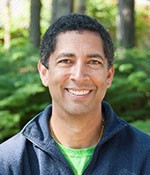
Dr. Vikram Iyengar
Department of Biology
College of Liberal Arts & Sciences
Project Title: Shifting Sands and Contentious Cohabitation: Investigating Social Networks in the Maritime Earwig (Anisolabis Maritima)
The spatial distribution of organisms can provide insight into their mating systems, either revealing mating preferences (intersexual selection for ornaments), competition for mates (intrasexual selection for armaments) or both. Teasing apart the relative contributions of these selective forces is critical in understanding mating systems, particularly given the potential combinations and complexities that arise when both sexes possess weaponry. My research group has been examining the maritime earwig Anisolabis Maritima, an insect well suited for studying sexual selection because males differ markedly from females in body size (males are more variable in size, and often larger than females) and weaponry (males possess asymmetrical, curved forceps whereas females have straight forceps). These insects are generally found in high densities under driftwood, but closer inspection showed that males tend to form aggregations; whereas females are distributed uniformly, a pattern indicative of territoriality. We further investigated the underlying mechanism of these patterns by videotaping pairwise interactions, which revealed sex and size-based differences related to both courtship and aggression. This summer, I will broaden this investigation and track individuals in larger groups to determine how social networks – that is, the frequency and nature of interactions within a relatively stable group – influence distribution patterns and, ultimately, the mating system of the maritime earwig.
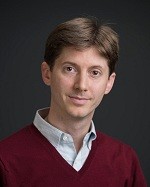
Dr. Andrew Scott
Department of Classical Studies
College of Liberal Arts & Sciences
Project Title: Herodian, Autopsy, and Historical Analysis
My project explores the use of eyewitness reporting in the work of Herodian, a third-century CE Roman historian writing in Greek. Ancient Greek and Roman historiographic theory valued two forms of historical research: sight (eyewitness reporting) and hearing (oral reports or written sources); of these two, sight was especially valued. Ancient Greeks and Romans also prized vividness of narration, creating a significant tension: how can a reader know when the author was really there, or when s/he was exploiting the preference for autopsy to create a vivid narrative? Herodian's history is full of scenes that suggest his presence as an eyewitness. Yet several of these scenes can be proved to be fabricated or seem completely unbelievable. My argument is that Herodian exploits the norms of Greco-Roman historiography to turn the reader into a virtual eyewitness and thus a proper judge of the author's initial claim about the activities of the younger emperors. At the outset of his history, Herodian states that he will chart the changes in power that occurred in his day, specifically noting young emperors who developed novel modes of self-presentation. It is in scenes surrounding these young emperors that Herodian clusters eyewitness claims and highly visual language. The end result is a reader who can spot a young tyrant, but a Roman public whose ability to do so dims throughout the work. The paper will appear in a supplemental volume for the ancient historiography journal Histos on the topic of contemporary historiography, which I am editing.
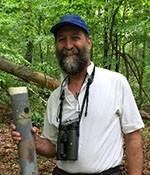
Dr. Robert Curry
Department of Biology
College of Liberal Arts & Sciences
Project Title: Gearing Up for Field Tests: Do Wild Hybrid Chickadees Suffer from Bad Spatial Memory?
In summer 2019, I will begin investigating whether hybrid chickadees are cognitively impaired. Hybridization has long been a topic of intense interest in evolutionary ecology because evaluating causes and consequences of interbreeding can help us understand how species distinctiveness, and thus biodiversity, is maintained. A core element concerns reinforcement, when natural selection favors mechanisms that enable organisms to avoid interbreeding, because hybrids have low fitness. Recently, scientists proposed that reinforcement could occur if genetic incompatibilities in hybrids that affect brain development and learning abilities cause cognitive impairment. A preliminary test in captivity revealed reduced spatial memory and problem-solving performance in hybrid chickadees, relative to the cognitive abilities of parental black-capped and Carolina chickadees (songbirds whose survival depends on finding seeds and storing them for later use). My students and I will now test the same hypothesis using wild chickadees, as part of my long-term research program concerning chickadee hybridization. Summer funding will support construction and deployment of ‘smart’ feeders for investigation of spatial memory in fall-winter: these use radio-frequency identification (RFID) technology to control access to seeds depending on each bird’s passive integrated transponder (PIT) leg band. By limiting each bird’s access to one feeder among an array of eight, and then recording via RFID all visits they make, we can measure each chickadee’s ability to learn the location of “their” feeder. We will evaluate results in relation to genotypes from DNA analysis to determine whether performance is reduced among hybrids and whether survival in natural populations is correspondingly reduced.
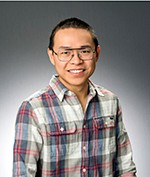
Dr. Xun Jiao
Department of Electrical & Computer Engineering
College of Engineering
Project Title: Memorization-based Energy-Efficient Neural Networks
Modeled after brain-inspired biological neuronal processing, (artificial) deep neural networks (DNNs, aka deep learning) are a family of problem-solving methods in machine learning, a subfield of the broad artificial intelligence. Recently, we have seen that DNNs are able to exceed human accuracy in various application domains such as image recognition, medical diagnosis and financial analysis. The superior accuracy of DNNs, however, comes at a cost of high computation workloads: Google’s latest neural network incurs billions of additions and multiplications. This leads to a high energy consumption on hardware platforms.
This project proposes a software-hardware codesign approach to reduce the computation workload in DNNs. At software-level, this project investigates novel and transformative algorithmic methodologies to reduce the computational complexity of DNNs by exploring the opportunities to reuse and skip computations in DNNs. At hardware-level, this project develops novel hardware architectures to support software mechanisms and implement optimized DNNs.
The success of this research project will result in DNNs deployment in low-power embedded devices that can perform so-called “deep learning on the edge” without sending massive information to the cloud for processing. This can bring transformative progress in many application fields such as transportation, manufacturing, healthcare, wearable computing and gaming. This project will lead to several open-source tools such as optimized DNN models and novel hardware architectures that will be available for the research community as well as industry corporations to prototype and evaluate its practice in real-world products.

Dr. Chengyu Li
Department of Mechanical Engineering
College of Engineering
Project Title: Towards Understanding Odor-Guided Navigation of Flying Insects and Its Applications in Unmanned Aerial Vehicles
Modern navigation of miniature unmanned aerial vehicles (UAV) strongly relies on global positioning system (GPS) to guide their flight. For GPS-denied environments, these man-made flying robotics lose the capability to find targets during surveillance and detection missions. In nature, insects can detect and locate distant targets by tracking odor plumes in natural environments, which is key to their survival. Their highly-efficient flapping-wing mechanism enables these agile fliers to follow odor plumes and track down odor resources. During the odor-guided navigation, flapping wings not only serve as propulsors for generating lift and maneuvering, but also actively draw odor plumes to the antenna, mimicking “sniffing” in mammals, which helps enhance olfactory detection. However, the mechanism underlying the odor-guided behavior of insects is still unclear due to the small wing size, fast flapping motions, and unpredictability of flying trajectories. This proposal aims to develop a virtual odor-tracking flight simulator based on an existing in-house computational fluid dynamics (CFD) solver to explore the odor-tracking process of insects. The proposed research leverages the PI’s expertise in numerical modeling and will investigate the navigation mechanisms underlying natural fliers’ odor-guided behavior. The findings from this project will provide important implications for the design of future odor-guided UAV with onboard olfactory detectors.

Dr. Michael Curran
Department of Economics
Villanova School of Business
Project Title: Factor Substitution Elasticities and Productivity Growth Across Industries
Will workers be replaced by robots? For over 200 years, this concern, although perhaps not quite so dystopian, has troubled economists. In other words, in light of productivity growth, how sensitive is the relative demand for labor of firms to changes in relative wages and costs of production? This project, in collaboration with Adnan Velic and Ryan Zalla, examines factor substitution elasticities and productivity growth across industries in the developed world. Various reasons for the rise in the ratio of capital to labor have been provided - globalization offshoring labor-intensive tasks, automation reducing employment and wages, declining price of investment goods with information technology, deteriorating growth despite a constant savings rate, and a rise in the intangible economy. Labor's share of income has been in decline. Our model shows how industry differences drive aggregate patterns. The literature has a paucity of studies using disaggregated industry level data across countries. The rise in the importance of intangible capital has implications for income inequality, taxation, and redistribution. An earlier wave of automation displaced unskilled workers, while the current wave of AI and machine learning allowing adaptation to changing environments may displace skilled labor too. Empirically, we distinguish between skilled and unskilled labor, tangible and intangible capital. These interactions remain relatively unexplored. Extending state-of-the-art data across a wide variety of industries and cohort of developed countries, we highlight how a more micro approach can explain patterns in the aggregate shares of labor and capital in national income and provide insight into sectoral patterns.

Dr. Kelly Welch
Department of Sociology & Criminology
College of Liberal Arts & Sciences
Project Title: Does the Public Become More Punitive Toward Terrorism Where there are More Residents of Middle Eastern Descent?
The American public has demonstrated considerable support for harsh national policies aimed at preventing terrorism and punishing suspected terrorists. Further, national statistics indicate an increase in hate crimes and bias incidents against Arabs, Muslims, and those perceived to be of Middle Eastern descent, despite the fact that the vast majority of terrorism in the U.S. is committed by others. While prior research shows that ethnic and religious stereotypes of terrorists as Middle Easterners contribute to harsh policy preferences, we do not yet know whether spatial proximity to Arabs, Muslims, or Middle Easterners affects support for War on Terror policies, as would be suggested by minority threat theory. This study will examine how the minority threat theoretical perspective can be applied to 1) a less-studied minority group in the U.S.: those of Middle Eastern descent and 2) a different form of crime: terrorism. It will also demonstrate how prominent visibility and proximity to those of Middle Eastern descent—a group without one single racial, ethnic, religious, or national affiliation—affects both stereotypes and anti-terror support. The aim of this project is to expand our understanding of how ethnic and religious stereotypes develop and how those processes shape views about—and responses to—terrorism.
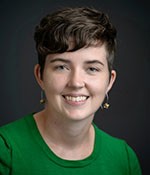
Dr. Mary Mullen
Department of English
College of Liberal Arts & Sciences
Project Title: The End of the Victorian University
Reflecting on the state of Negro Colleges in 1933, W. E. B. Du Bois laments the lasting dominance of the idea of the Victorian university. When people speak of universities, he argues, they often imagine Oxford or Cambridge from Victorian Britain: it is “a tenacious legend preserved in fiction, poetry, and essay.” My book project, tentatively titled, The End of the Victorian University, traces how the legend of the Victorian university endures in the twenty-first century, despite continued work by Du Bois and others to challenge it. Moving between contemporary debates in the humanities and Victorian texts and discourses, the book asks two questions: 1) how does the idea of the Victorian university continue to shape—and constrain—how we imagine and organize universities? 2) how can we better ensure that the critiques generated within the humanities change the institutions that govern humanistic inquiry?
This summer, I will research and write the first chapter of this project. This chapter draws on periodical literature, pamphlets, essays, and college novels from the nineteenth century to explain how the idea of the Victorian university emerged through public debates and conversations about the university in crisis. It will focus on well-cited texts that continue to shape discussions of the university such as John Henry Newman’s The Idea of a University (1852) and Matthew Arnold’s Culture and Anarchy (1869) alongside less-studied work to understand the Victorian university as both an idea and a material structure.
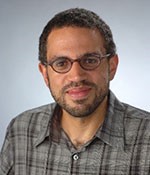
Dr. Vincent Lloyd
Department of Theology & Religious Studies
College of Liberal Arts & Sciences
Project Title: The Anti-Colonial Origins of Political Theology
Political theology, as an academic field within Christian theology, usually traces its origins to late 1960s Germany. Two Protestants theologians, Jürgen Moltmann and Dorothee Sölle, and one Catholic theologian, Johann Baptist Metz, are credited with turning their colleagues’ attention toward political questions and usually it is grappling with the Holocaust that is said to motivate their work. Preliminary research has led me to believe that this standard narrative of political theology’s origins is misleading. At the moment of political theology’s origins, the German political and academic world was rocked by the student and worker protests, part of the global wave of leftist social movements. Activists demanded an end to German support for the American-led war in Vietnam, a culmination of activists’ support over the decade for anti-colonial movements in Africa, Latin America, the Caribbean and beyond. Political theology was born in this atmosphere and I hypothesize that we should read the foundational work of Moltmann and Metz as responding primarily to late-60s unrest – on which they were conspicuously silent, even as they wrote extensively about Auschwitz. As a scholar of religion, my interest is primarily in telling a new story about the field of political theology, drawing on historical sources in order to ask new questions about its key concepts. Rather than tapping some Marxist theoretical resources in order to respond to the Holocaust, might we better understand Christian political theology as managing the cultural anxieties that accompany the end of colonialism and receding white, European hegemony?
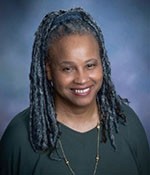
Ruth Gordon, JD
Charles Widger School of Law
Project Title: Chapter 8 Technology and Low-Income Countries in the Global South
DEVELOPMENT DISRUPTED: THE GLOBAL SOUTH IN THE 21ST CENTURY, explores how development evolved and is currently being reshaped by a shifting international hierarchy and technology that is accelerating at an exponential rate. My Villanova University Research Grant will fund my work on Chapter 8 which explores the extent to which technology has penetrated the Global South and its potential to address and improve the prospects of resolving a host of problems that have defied previous interventions. This includes, inter alia, medicine and health care, education, agricultural production, finance and banking, energy and access to electricity. A Fulbright Research Grant (Hong Kong) will fund the penultimate Chapter, Climate Change and the Global South, which unfortunately has the potential to disrupt this otherwise promising narrative.
